Resources
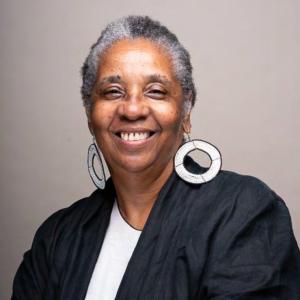
Part Two: Ritual Extends the Depth of Our Imagination. Ritual takes the familiar and enlivens it with our imagination. Consider it this way, you have a favorite dance or song or prayer. The reason we can dance it, sing it, pray it, again and again is that each time our ingenuity takes the work to another dimension. Each time we feel, express, and see something new that we did not experience before. It is this aspect of ritual that makes it meaningful and alive and different from a routine. Each time we engage in ritual it comes alive with the genius of our imagination. Ritual can even begin in our imagination and blossom through its application. We imagine a portal, a doorway in liminal spaces and to our delight, the ritual affords the opportunity to be in liminality and create. So, during the ritual there may be revelation, illumination and even inspiration that touches our spirit so that it becomes real. The ritual has moved from a familiar intent, or action, to the manifestation of our imagining. With practice, we become fluid in ritual making and always expect our imagination to do what it does. In this way, ritual maintains the integrity of being in the present while reaching into the unseen (imagination). Because we are intentional in ritual, it also creates a kind of authority to dreaming and imagining. Ritual helps to declare that what we dream, what we imagine, is as much a part of our collective covenant in Spirit as the faith we have in our Creator and Ancestors working on our behalf. So, do ritual; do ritual to imagine deeply!
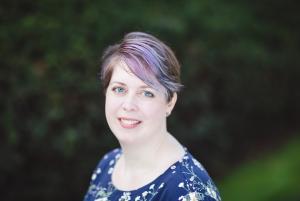
One of my favorite genres of fantasy fiction is the “magical door” story – tales where a person finds a mystical, strange doorway into another world. Alice in Wonderland is probably the best-known example, but I’m more fond of the contemporary takes, especially Seanan McGuire’s Every Heart a Doorway (2016) and the Wayward Children series that follows it. In McGuire’s books, children disappear into doorways that lead them to worlds where they feel profoundly at home – sometimes pretty ones, like a world where everything is made of candy, but just as often menacing worlds where lightning can raise people from the dead or where they fight alongside merpeople against the Eldritch horrors of the deep. Besides being the ultimate escapist fantasy for anybody who felt wildly ill-at-ease and out of place in their adolescent years (everybody, perhaps?), these stories also convey that we aren’t really looking for a docile, perfect place to be – we just want to be where we know we fit. This magical door framework recently snuck up on me during an exercise on teaching – we were asked to artistically represent our teaching selves, or the “bother” that spurs us on as professors. Without realizing the connection to some of my favorite books, I quickly crocheted some drab ribbons into a doorway – and on the other side of that doorway, I painted wild and colorful movement, represented in glitter and pom poms and sticky foam. This is how I see my teaching in theology – trying to coax students through a doorway into a world that is bright and overwhelming, chaotic but lovely. Looking at my hasty picture afterwards, I found myself realizing again why students can be so hesitant to jump into this wild world. The doorposts are pretty, in their own way, and they certainly are familiar. We all cling to groundedness when we’re uncertain, and higher education is constantly uncertain, with students suddenly struggling with topics they once found simple, oscillating between the career plans they expected and the ones that better fit their skills, fretting at each new professor’s style of teaching and grading. While my students as a group aren’t particularly religious, for some, their fundamental beliefs about God or the universe or that everything happens for a reason are one of the few stable parts of their identity. My theology class threatens to shake up even that. So, at least on the tough days, they cling to the doorposts and lintels like a toddler avoiding a bath, grasping onto anything rooted until the danger has passed. Or, maybe just as often, they go quiet and inward, not wanting to step through the portal into a conversation they feel unprepared for. Questions and options seem to help – “Do you want to get into groups now, or should we do a poll first?” “I know we might not know much about vows of silence, but who in here needs complete quiet to do homework?” I get them talking about themselves first, and our content second. That way, they can peek through the windows before deciding whether to come outside, and that first tiny step might be enough to build momentum. It’s a helpful reminder that my students are always doing hard work to engage with me and the readings I assign – almost any class day brings up questions. “Do I believe this?” “Could I live that way?” “What commitments would I die for?” “What commitments will I live for?” Even for the non-religious, theology class always holds the potential for deep introspection alongside factual learning, and introspection is hard. With my doorway image in mind, I can recall the importance of gentleness and compassion in my role – not easy-ness, but a gentleness that reminds me to notice the uncertainty, even fear behind the disengagement, and to be ready to try again and again to connect with each individual. I can see more clearly how chaotic and overwhelming the field seems, especially to those who have never crossed the threshold, and look for ways to reassure them that there is something familiar and good on the other side, and that I’ll accompany them until they find it. I remember well a young Latina student pulling me aside after the last day of class and whispering to me, almost like a secret, “Until this class, I didn’t realize I could be both Catholic and a feminist!” She had found her place to belong in the mess of it all. It helps me remember how badly we all want to find a place where we feel welcome, and to create that with both my affect and my syllabus. Every day is a doorway in theology class, and my role is to stand behind it, beckoning, and reassuring, “It’s wonderful here. All you have to do is take another step.”
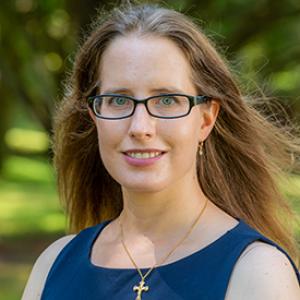
I remember the first time I felt a sense of awe and wonder about theology. It was in my required Problem of God class at Georgetown University, where I received my undergraduate degree. I had picked a section of the course based on my interest in a list of readings provided with the registration materials the school sent me before I started my freshman year. The professor of that course turned out to be Fr. Thomas King, SJ, who had a reputation as an excellent teacher—something I had no idea about at the time I signed up for the course. I do know I was very fortunate to have done so as my friends who wanted to take his class in the following semester often had trouble finding a spot in his classes. At this point—over twenty years later—I remember little of the specific content of that class, but in terms of overall structure, Fr. King had basically divided everything into groups of three. We examined a variety of readings—from Augustine to Sartre—and Fr. King’s lectures helped us to understand the way each reading explained the nature of God. In the final class of the semester, Fr. King reviewed all the previous content, illustrating how each author’s approach to God (even Sartre!) could fall into one of three categories of ways of talking about God—ways that ultimately could be thought of as an understanding of God as the Father, an understanding of God as the Son, and an understanding of God as the Spirit. As everyone packed up on that final note, my friend Mike and I sat in our seats, completely dumbfounded. Mike turned to me and said, “He just solved the problem of God.” In that moment, for me, a spark had been lit. I had a sense of awe and wonder about the concepts we had examined, and I wanted more of that sense. In this piece, I aimed to get at a representation of this spark of awe and wonder. The triangle represents the mystery of the divine—a triangle to represent the Trinitarian God of my tradition of Christianity, with a question mark to show how humans, in this life, can never fully know or understand the divine. The heart is meant to represent the sense of awe and wonder that I feel. I would describe it as a sense of joy burning in my heart—similar to the language Blaise Pascal used in his “memorial,” a description of a mystical experience he had that is often published as part of his Pensées, and echoing, of course, Augustine’s idea of the restless heart. The hands are meant to represent my continued seeking of that awe and wonder in my study and research. After creating this, I realized that my imagery had unintentionally mirrored a drawing that one of my other undergraduate professors, Fr. Otto Hentz, SJ, used to draw on the board. In my senior year, I happened to meet an alum who told me this image was all I needed to know in Fr. Hentz’s class—that the triangle represented the mystery of God and the two lines represented the human response to the mystery of God. I recall a bit more discussion in Fr. Hentz’s class about our reading assignments, but his lectures almost always included a reference to this image. When I first considered graduate studies in theology, these Jesuits were the model of the teacher that I wanted to be—one who narrates the content through lecture to try to amaze my students and thus produce the same spark of awe and wonder in my students that had struck me so many years previously. However, I eventually drew on a different undergraduate experience of awe and wonder as a model for my teaching—the experience of reading Pascal’s Pensées in French while studying abroad in Strasbourg, France. This was in the context of a sixteenth- and seventeenth-century French literature course, not a theology course, but as I read and interpreted the text for myself in that context, I found a sense of profoundness and truth in what Pascal wrote. For example, one of my favorite fragments states, “Why do you kill me? What! do you not live on the other side of the water? If you lived on this side, my friend, I should be an assassin, and it would be unjust to slay you in this manner. But since you live on the other side, I am a hero, and it is just” (fr. 293). This fragment really illustrates the absurdity of the ways we divide and separate our human family. I found through this experience while studying abroad that I could find the sense of awe and wonder for myself, that I didn’t need a professor to tell it to me. Rather, reading, interpreting, and making meaning for myself through these texts could produce that same sense of awe and wonder. Thus, when I teach today, I aim to help my students learn to read, interpret, and discuss texts for themselves. I know that not everyone will find that spark of awe and wonder, but I still aim to provide them with an opportunity for it.

[caption id="attachment_250814" align="alignleft" width="335"] Gesture drawing, charcoal on newsprint[/caption] I remember sitting beside a piece of blank newsprint, clutching a twig of willow charcoal, looking at a table covered in all sorts of objects—a shiny chrome blender base, a bleached cow’s skull, yards of loosely draped fabric, old pieces of driftwood, a single ice skate and various pots, pans, and kitchen bowls. We were doing “gesture drawing” and my task was to use my charcoal quickly and loosely to sketch the vaguest and most general shapes I was seeing. I had to look beyond the detail of the objects to the ways in which overall shapes emerged from the play of dark and light. My attempts looked ghostly and out of focus, primitive and unskilled. The truth was that I had never done this before, and I felt completely out of my depth. I was taking a drawing class in our Fine Arts department. This was my first undergraduate class in more than twenty years, and I was taking it for credit. I registered as a student at my own institution, going through a registration process where I was even asked to produce my high school transcripts. And here I was, sitting around the table with my charcoal twig and my newsprint along with the other students in the class, completely out of my comfort zone, remembering what it was like to be learning as an undergrad. I decided to take this course because I was becoming increasingly interested in the creative process and the ways in which creative expression could function to connect students with complex ideas and abstract notions. But in exploring this creative entry point, I also wanted to remember what it was like to be coming at these issues as a student and to be learning about things that required one stepping beyond one’s usual range of experience and expertise. A drawing class was something I hoped would improve my drawing, but also allow me to consider with more empathy the experience of students in my classes who encounter challenging ideas and practices all the time. I learned a lot in this drawing class. I learned the difference between drawing what you see and drawing what you think. I learned that the creative process is often about following one’s nose, taking cues from what is in front of you and then taking the next step. I learned that inspiration often happens in hindsight, arising from consistent and sometimes less than inspiring routines. And I was reminded that learning involves taking risks and being vulnerable, ideally with the support of others around you. In my own classes, I include a lot of creative expressions of religious ideas and beliefs from the history of art and literature. I have always found these examples invaluable as ways of further illuminating what can otherwise seem counterintuitive and elusive notions. Sometimes, even for the cultural Christian, notions of incarnation, sacred mystery, and ineffability, for example, can appear both overly familiar and bewilderingly abstract. Creative expressions from the tradition can serve to span the distance between ancient, paradoxical notions and provide a location for ideas to play out in connection with more familiar, contemporary experiences. And yet, even the greatest work of art, the greatest masters of Western culture, from the past and present, can sometimes fail to bridge the gap. Sometimes connecting what is counter-intuitive to what is creative means taking a risk. It means being out of one’s depth and feeling one’s way forward, exploring the link between mystery and possibility. My attempts at gesture drawing were disconcerting, for sure, but in the end, they proved to be quite liberating. I had to let go of my preconceptions of what constituted “good art,” to quiet my internal art critic and trust my eye and my arm to do the work. I was forced to draw what I saw rather than draw what I had in mind. Stepping out of my comfort zone meant discovering new ways of seeing and new ways of doing. I could see that taking creative risks had the potential to open richer veins of insight and to reveal the invisible limitations of convention and culture that can sometimes limit inquiry and stifle growth. But does this exercise work in the other direction? Drawing what one sees rather than what one thinks is one thing, but what about the reverse? What happens when we draw what we have in mind and turn this idea into something others can see? A simple exercise I have used to connect the abstract with the creative involves asking students to draw the concept of belief. I ask them to draw something that doesn’t easily translate to a discrete object in the world. In effect, I’m asking the students the impossible task of giving a complex, abstract idea discrete and specific form. Everyone knows what belief is, but what does it look like? While the results can be clever and are often surprising, they also reveal how obscure and unfamiliar the term was from the beginning. Drawing an abstract concept involves being creative, for sure, but it also means committing to something specific, making choices about what to put on the page versus what to leave out or unaddressed. Every picture is but a gesture of the totality. While, a single picture is always a limited account of a larger idea, when the resulting pictures from the class are gathered, a wonderful richness emerges, still fuzzy around the edges, still indistinct and relatively unformed and yet collectively, they are evocative, rich, and real. In this way, drawing involves embodying an idea, giving it a certain kind of flesh and form in ways that depart from the goals and achievements of writing alone. It is not that a picture tells a thousand words so much as pictures and creative expressions have the capacity to speak differently. The vividness of this creative act, the grappling with impossibility and the inspiration of a collective perspective prompts a learning journey that I view with renewed respect as deeply creative, slightly unnerving, and open to immense possibility.
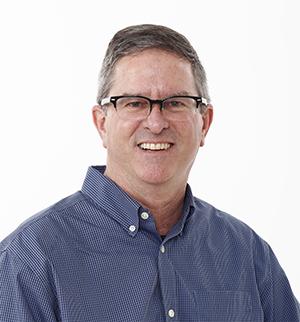
How fitting it is that as I began the final edits on this post, I ended up clenching my jaw, tensing my shoulders, and generally doing just the opposite of what I’m trying to say in this piece. My goal is to bring the benefits of self-care into the classroom. Self-care are two words I don’t use. But, fifteen years ago a Wabash Center mentor said, “You are really good at self-care.” My modes of self-care have morphed over the years, and now the main one is my visual art practice. What I am considering now are ways to facilitate artistic self-care among students. What might it look like to create space in classrooms for students to make art as a way of learning religious studies? How might students not only learn religious studies, but have the learning experience mimic the calm, creative moments of making art? I’m not saying that art is just about feeling good; no, it’s hard work, but a very different type of work than writing papers. I didn’t grow up drawing a lot, but I majored in art, sort of, and then dropped it after a year. The last two summers, I focused intensively on developing my art practice. Rather than thinking, “I really should be doing something else with my time,” I thought about how my linework asked questions; how the calming effects of artistic processes opened space to imagine my art as doing research. Of course, there would be a written element, but the art itself became the primary source for the writing. I was also preparing for my first solo gallery show, which was on hold for more than a year due to COVID-19. My research/artmaking for the show began with the question, “What would it be like to draw as a Buddhist?” Obviously, that question simply leads to innumerable other questions, but that’s part of the point: the merging of drawing and doing research. During my artist talk, I was describing the central piece—a five-by-ten foot vertical triptych—when I spontaneously blurted out, “This is not a hobby. This is who I am at the core of my being.” My next thought was, “Whoa. Where did that come from?” That moment solidified my resolve to facilitate similar experiences in the religious studies classroom. Yes, I’m dreaming a bit here, but it’s a dream I’m actively pursuing. I named the triptych, “Forgetting the Ox,” which is the seventh of ten stages on the path toward enlightenment, according to the Ten Ox-herding Pictures commonly used in Zen. My drawing illustrates—rather loosely—some parallels between my becoming an artist and the struggles of the ox-herder in locating his “true nature.” It didn’t take long for me to imagine an entire course designed around art-making as doing religious studies. I already regularly have students draw their metaphor of being a college student, their religious or moral autobiography as a one-page, six-panel comic, or an image of the Buddha without looking at reference material. These exercises feel like “easy days” from a student’s perspective. Honestly, sometimes these exercises feel like I’m not really teaching. But there is plenty of learning taking place: students relax, laugh, tell stories about their religious upbringing, and gain confidence in sharing more of themselves as they describe their drawing to their classmates. The metaphor drawing, in particular, leads to students taking risks and becoming vulnerable; for many this is their first time drawing anything in years. Class becomes self-care, if only for a short time. So why not build upon those experiences to learn course material, moving well beyond personal metaphors? What if, for instance, in order to learn about Buddhism, students were to create a series of images of the Buddha? In the process, they would make new connections to the course, and likely retain information far longer than normal. Plus, they would add the somatic/artistic element. I’m not ready to forgo writing assignments, but the writing would now incorporate a discussion of their artwork and how it integrated with their research. My own metaphor as a professor is radically different from the one I drew many years ago in a Wabash Center pre-tenure workshop. At the time, my drawing depicted a long winding path filled with obstacles. Today, I would draw a group of students on winding paths, with me off to the side, in awe of their creativity, ready to help them figure out their paths for themselves. The new metaphor is less about me, and more about empowering students as they create their own journey of self-discovery.
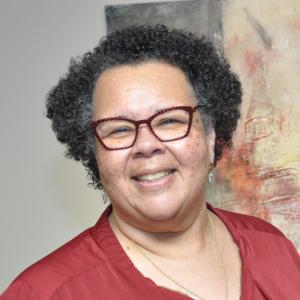
In the late 1970s, the summer day camp hosted by my church was filled with children grades 1 to 6. The counselors, including me and my best friend Michele, were high school aged people. I taught Nature Studies and Michele taught Spanish. Along with these two subjects, the campers also took classes in recreation, and crafts. We swam at the neighborhood pool in the afternoons and on Thursdays we went on excursions to Philadelphia sites like the Fairmount Park summer theatre, Music at the Del, the Philadelphia Zoo, the Franklin Institute of Science, and boat rides down the Delaware River. I had fun teaching, learning to teach, playing with the kids, and having a summer job with a pay check. Snack time was a highlight of most days. Served immediately after swimming, the thirty-minute afternoon break typically provided a choice between cookies or fruit. At each snack time, baskets of treats were placed on the table for campers and counselors to take what they wanted. By Fridays, the cookies, having been the choice for most of the children, were depleted. Friday snack choices were limited to fresh fruit, apples or oranges. Much to my surprise, only a few children would eat the fruit – choosing instead to have no snack. Children who took a piece of fruit would only take a bite or two, then discard the rest. Jamal was a bright, intelligent camper – age 10. He had beautiful cinnamon colored skin, stood about four foot/ten inches tall - he looked like a baby Denzel. He was mostly lanky arms and giant feet in high-top sneakers. When he played half-ball, red light/green light or tag, he had an awkward grace as he galloped in play - never tripping over his giant feet. Jamal could also be described as being “smart-alecky” as he often was sarcastic to adults. I liked Jamal for all of these reasons. He was confident, thought-filled, interesting to talk to. He was funny and he liked the attention I gave him. Jamal and I developed a quick rapport during sessions in my classes on urban trees, flowers, and pet care. He enjoyed caring for the classroom rabbit (named TR i.e. The Rabbit), hamsters (Sid and Natalie), snakes (Adam and Eve), and voles (no names given). I soon learned that it only took a stern look from me for Jamal to temper his audacious behavior and curb his insolent tongue. This also endeared him to me. At snack time, rather than sitting with the other counselors or campers, Jamal and I would sit together to talk. We talked about current events. I would pepper him with questions about his aspirations – “Why do you want to be a truck driver?”. Jamal was one of the kids who looked disappointed when the snack baskets only offered apples or oranges. On a particular Friday, Jamal placed an orange on the table, then climbed onto the picnic bench and seated himself across from me. Jamal stared at the orange. I asked him, “Why don’t you eat the fruit?” Without hesitation and still staring at the orange with suspicious eyes, Jamal answered, “You can’t trust it.” I repeated his comment, but made it into a question, “You can’t trust it?” I continued, “Little boy, what does that mean?” Jamal, still looking at the orange, answered, “You can’t trust what it’s gonna taste like.” Jamal then looked at me with an expression that conveyed I had little common sense. “Boy, what are you saying?” – I asked with impatience. Peering at me over his wire framed glasses, Jamal said, “It’s like this. When you bite into an Oreo cookie or a potato chip – you know what it’s gonna taste like. It tastes the same every time. But! (Jamal put his finger up and pointed at the orange for emphasis as if he was accusing the orange of wrong doing) If you eat a piece of fruit - you don’t know what its gonna taste like. It might be sweet(?) (dramatic pause) It might be sour(?).” While speaking, Jamal pulled his shoulders up to his ears and turned his palms up to communicate the uncertainty – “You just don’t know what you gonna get.” Now forty-years later, I have not seen Jamal since summer day camp days, but his insight and perspective continue to teach me. The finicky eating habits of Jamal, and the other campers, might be what I witness in some college and graduate school students. The dietary preference for processed foods over nutritious organic offerings might be the same sensibility expressed by students who resist creative assignments in our courses. At the risk of overworking this day camp story – what if our students prefer that which is predictable, formulaic, and expectable in our courses? What if our students reward our predictability with their affirming behaviors and chastise us when our assignments pull them out of their comfort zones? More to the point, what if the lack of variety in our assignments is a detriment to our students’ formation? What if our narrow offerings keep students from learning needed lessons for expansive formation in the digital age? In other words, risk averse students are difficult to teach and risk-averse teachers might be harming the learning. Like apples and oranges, teaching is organic, alive, unpredictable – often conflictual. Even with the best preparation, in the words of Jamal about the fresh fruit snack, “You don’t know what you gonna get.” Teaching is more art, finesse, delicacy than science, recipe, or formula. Predicting how a class will go with ironclad certainty is for people who do not understand the nature of teaching. Students’ sensibilities to newness, risk, and exploring the unknown impact the dynamics of the course. I remember summers of designing course assignments and learning activities which were tailored for my upcoming fall courses. I would consider the climate of the school, the events of the larger society, the students enrolled that particular semester. I would design assignments which would connect our classroom learning to congregations as well as the wider society. I would dream up writing assignments which asked for creative non-fiction genres – letters, personal reflection, op-ed/opinion pieces, and project proposals. I would assign mapping, charting, poster-making for hallway exhibits and public displays of learning. Some assignments required group presentations, creation of scavenger hunts, bibles study lessons (written and demonstrated) or creation of playlists, reports of excursions taken beyond our class time. I developed an entire repertoire of assignments complete with detailed instructions, assessment rubrics, and foolproof encouragement! I made these course design efforts because I believe students need to develop problem solving skills, hone their own creativity, and get acquainted with the makings of innovation and newness. As is typical, on the first day of class I would review the syllabus with the students. Oftentimes my creative assignments were met with grimacing faces, untrusting eyes, hesitate students who preferred the predictable critical essay and term paper over the creative. So many of my students were like Jamal who wanted to know the taste of everything before risking the bite. Many students preferred an intellectual encounter more like processed foods than risking learning activities for which they were uncertain, unrehearsed, and unfamiliar. Adult learners prefer to be affirmed for what they already know than meeting the challenge to learn the new. Much to my joy, each class had four or five students who delighted in the creative, in the unpredictable and the innovative. I depended upon them to coax, model, and bring-along those students for which my unorthodox assignments were too scary. For those of us who are interested in preparing students for the complexities of the 21st century, forming students into societal change agents, or simply teaching creatively for our own artistry and sanity – we must ask ourselves about our student’s palate for the uncertain, the unpredictable and the unfamiliar. In my early years of teaching several students found their way to the Dean’s office to complain about my assignments. Thankfully, I had a supportive Dean. My hunch is that teaching predictably fosters students less prepared to handle surprise, adversity, or the chancy sour notes of life. Worse yet, predictable teaching rarely challenges the status quo or shows students ideas beyond their established norms and previously uninterrogated values. Adeptness with diversity is a key to student formation. Better formation of students requires we teach to invite them to be more aware of and able to traverse all kinds of diversity. Our classrooms are rife with the possibility of exposing students to the complexity of many: races, nationalities, genders, cultures, religions, theologies, ideologies, perspectives, preferences, values, learnings, etc. In so doing, we debunk the notions of supremacy - in all of its forms. I am not suggesting class assignments should be like amusement park fun houses with trap doors in the floors, wavy mirrors and scary things jumping out of dark shadows in vulnerable moments. I have never been a proponent of pop-quizzes, adding assignments onto a syllabus as punishment, or attempting to control poor student habits with unexpected tests. We are not trying to induce fear or panic in our students. But neither do we want to lull students into complacency and complicity with redundancy, staleness, and musty, formulaic teaching. Embracing a wider palette of assignments models for our students the expectation of grappling with diversity as learning. While Jamal and I sat together at the picnic table - I peeled the orange. I handed him the peeling to take to the trash. By the time he returned, I had placed half the orange on a napkin on his side of the table – the other half I held in my hand. Jamal looked at his orange half. I looked at Jamal. Jamal looked at me. I pulled two segments from my half and popped them into my mouth and chewed. The orange was slightly tart, but not offensive to my pallet. I gestured to Jamal to try his half.

The narration below is my recollection of a typical interchange between my mother and my father when I was a child. Be mindful that we lived in a large home and invariably during these conversations my father would be on the first floor and my mother would be on the second floor. So, as you read their exchange imagine loud voices between two people who cannot see one another. “Nancy, where is the wah-wah-wah!” said my father standing at the bottom of the staircase. My mother, likely sewing, or making beds, or doing some household work on the second floor, answered, “Look in the kitchen; in the drawer under the cabinet with the water glasses; it’s on the left-hand side.” Dad goes to the kitchen, opens a drawer, and rummages around the drawer, but cannot locate the wah-wah-wah. Dad returns to the bottom of the stairs to ask to my mother again. “Nancy, I don’t see it. It is not there.” “Yes, it is! Look in the drawer – the one with the red handle; the wah-wah-wah is on the left-hand side.” said my mother. Dad returns to the kitchen. He checks to see if he had previously opened the correct drawer. He had not. This time he locates the drawer with the red handle, opens it and rummages around in the drawer, but does not see the wah-wah-wah. A third time, he returns to the bottom of the stairs and in a louder, frustrated voice says, ‘Nancy! It’s not there. I can’t find the wah-wah-wah!!!” My mother, in a calm, and loud voice replies, “Keep looking!” My father, convinced my mother is mistaken about the location of the wah-wah-wah, gives up. Acquainted with my father’s sensibilities, my mother stops the work she is doing, and goes downstairs to the kitchen. Hearing my mother’s movements on the stairs (and our dog running ahead of her as she walks), my father waits in the kitchen for my mother – glad she has come to find the wah-wah-wah for him. My mother walks past my father, pulls open the drawer under the cabinet with the water glasses, the drawer with the red handle. Seeing the jumbled contents of the drawer she makes a mental note to reorganize the drawer at dinner time. She reaches into the drawer, near the left-hand side, and pulls out the wah-wah-wah. Shocked, my father takes the wah-wah-wah and contritely kisses my mother on the cheek as a thanks for finding it for him. My question for reflection is not so much about my mother’s skills of household item curation, but about my father’s inability to see. Why could my father, even with the most specific directions, not see that for which he was searching? Or, why cannot our students, even with detailed syllabi, thick instructions for assignments, accomplish assignments? In other words, what does it take to see when searching? One answer is perseverance. Keep looking! My experience is that adult students want to Google once and call it research. Or they want to read once and expect to understand dense materials. When my mother instructed my father to keep looking! she was calling for skills of perseverance. “Keep looking!” means that even if it is not in your experience or imagination, (or the drawer you are rummaging through) it is in the imagination and knowledge of your teachers, so endure until you get to the end. As teachers, providing opportunities for our students to develop perseverance – the ability to keep looking until you can see it, find it, know it, understand it, get insight from it - is invaluable. The inability for students to see is often vividly expressed in introductory classes. Teaching introductory courses often means that newly matriculated students’ conveyance of what they know and the ways they approach the course is primarily through life experience or learnings from other degrees in other schools. New students grappling with new materials, new approaches, new vocabulary, and new praxes often make for frustrated learners and fearful adults. Adult learners, for the most part, do not like attempting the new. They prefer being affirmed for what they already know. For some, learning anew feels insulting, uncomfortable – as if it is personal judgment for not knowing what they should know. Studying religion and theology exacerbate these feelings of judgement – woulda’ known, shoulda’ known’, and coulda’ known - are haunting experiences which free float in classrooms. For students who come from traditions steeped in particularly exacting ways of knowing sacred texts and sacred ways, the experience of not knowing can be devastating. There were semesters I would assign one critical essay to be written over the duration of the entire semester. Incrementally, students would need to turn-in drafts of the essay. Without assigning a grade, I would edit the draft then return for further research, thinking and rewriting. At the end of the semester, the essay, now polished by the drafting process, would be submitted for grading. Many students let me know that this iterative process was emotionally very difficult. They did not want to keep “re-doing” the essay. They saw little value in moving from a weak version to a stronger version, especially if each version did not receive a grade. They found it challenging to keep looking for the same thing until it was found, created, written - well. This assignment exposed the narrow edges of their skills of perseverance. At the risk of overworking an illustration, the previous scene of my parent’s typical conversation has its limits concerning teaching and learning. Consider that my parents, as spouse of one another, did not have the contract of teacher and learner. A contract between student and teacher is a different contract than between husband and wife, parent and child, employer and employee. The contract between teacher and learner has its own distinctiveness. The contract between teacher and learner is meant to create space so the learner can disclose, be vulnerable, expose their curiosity, and their want to expand and find insight. In return, the teacher provides opportunities for new knowledges, and maturity. So, here is the judgement call unique to the teacher/learner contract and the notion of perseverance. In the moments before sight (understanding) by a learner, in the moments of frustration when what is searched for cannot be located or seen, the teacher has got to allow the learner the honor of the moment of not-knowing – the moment of struggle. For the teacher to rush in with the answer (rush in to rescue) is to deny the learner the moment of ah-hah! The ah-hah! moment of magic, achievement, and growth when what was searched for is found is why, in part, students want to learn. Teachers must be willing and able to stand in the moment when the student is frustrated and not act. In this moment it is easier to simply rescue them from the pain of learning, but resist. This is a truly difficult moment for teachers to hold. In these moments, we must learn to persevere.
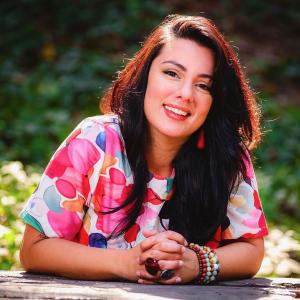
During the past year, two of my favorite Brazilian writers and educators, Luiz Antonio Simas and Luiz Rufino collaborated on yet another book: Encantamento: Sobre a Política da Vida (Incantation: On the Politics of Life). One of the central affirmations of their work (which follows their previous co-authored publications: A Pedagogy of the Crossroads, An Arrow Through Time, and The Enchanted Science of Macumbas) is that the opposite of life isn’t death—it is desencantamento, or an inability to surrender to a process of incantation. As a verb, incantare evokes our capacity to fuse song and word in an effort to raise our spirits, to spark magic in our imaginations, to invite divine presence. Our capacity to incantate spaces of learning does precisely what theologian Rubem Alves invites us to do: name and invoke the not-yet worlds, so as to break the spells of right-here worlds that continue to abandon, oppress, exclude, and sever from ourselves and our communities of belonging. Incantation as a poetic of resistance allows us to escape, disobey, and ambush the traps set through the colonial matrix of power so that bodies can dare to see, create, invent, and integrate new possibilities freedom, belonging, and liberation through creativity and imagination. Incantation, Simas and Rufino affirm, nests our capacity to move through time, to experience a passage between forms and worlds, to change our points of reference through a politic of life that is rooted in an imprinting of the everyday as rites of reading and writing different poetic routes capable of setting traps to our collective loss of hope and vivacity.[i] In this sense, incantation is an exercise in emergence and survivance that lives and breathes beyond the terrorizing effects of coloniality. It’s the commitment to movement, occupation, visibility, insertion, and participation. It’s the creative force that travels through crossroads of knowledge-making, confronting hierarchizations produced by ontological, epistemological, and semiotic violences. Art, as I understand it, has a tremendous power to forge incantatory pathways of resistance because of its capacity to dis-educate us from disciplinary molding. It reverberates and discloses to us that which is hidden in our interior recesses in embodied, striking, and visceral ways. It can help us re-educate our affections, as Paulo Freire puts it, or work a kind of magic in our souls, as bell hooks states. It also inspires us to name the world as we see it, and to find a poetic tongue when the language we know fails us. It helps us resist, heal, connect, conjure, and tend to all our relations. As generative clearings, the arts are sites for world-making, for dreaming, rehearsing, and choreographing new possibilities of being and intervening in the world. When we immerse ourselves in acts of artmaking, we have the opportunity to access the visceral, the somatic life of the body, its reflexes, limits, intuition, responses, desires, needs, and its alchemies. When we encourage and invite students to in-corporate artmaking processes as they engage readings, discussions, and bodies of knowledge, we participate in this politic of incantation. A student’s performance and ritual entitled “Disposable Beauty” still stands as one of the most profound and generative projects to which I have been witness. As a final integrative assignment, the performance consisted of placing delicate flower arrangements throughout locations in her neighborhood that were marked by abuse, violence, and abandonment. Such poetic gestures in vulnerable spaces in the city sought to raise awareness of our transience, interdependence, and negligence in the face of injustice. The flower assemblages were made out of blossoms and foliage that flower shops would throw away at the end of the day. This poetic gesture both incantated and resisted the (i)logic of degradation, disposability, oppression, and inequity by orienting herself and participants in acts of creative wonder. Through her invocation of not-yet worlds, she extended a gesture of care, of regard, of re-worlding, refusing to be desencantada with the world around her. At the end of these performances, she invited folks to partake in tea ceremonies that were rooted in offering the gift of reciprocity, spiritual care, regard, and a warm cup of tea. As a poetic of incantation, her artistic gestures imbued spaces of desolation, disposability, and abandonment with love, presence, and beauty through a practice that integrated the semester’s resources, readings, discussions and questions with her own wisdom, creativity, and spiritual sensibilities. I return to this experience often to remind myself to continuously ask how many of the assignments outlined in my syllabi impede or foster poetic and incantatory experimentations. Notes [i] See Luiz Antonio Simas and Luiz Rufino, Encantamento: Sobre Política de Vida (Rio de Janeiro, RJ: Morula Editorial, 2020). Photo Credit: Miguel Garcia Saaved - stock.Adobe.com
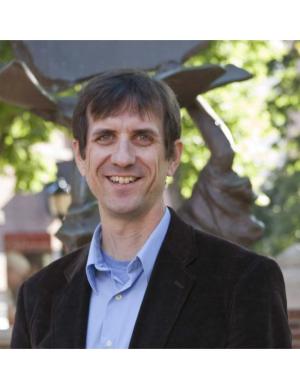
Democracy, in its essence, and genius, is imaginative love for and identification with a community with which, much of the time and in many ways, one may be in profound disagreement. ~ Marilynne Robinson[1] These words hung like a silent invocation on the threshold of my Truth, Beauty, and Goodness class this fall. They appeared overnight as the election neared, scripted elegantly on a scrap of paper and tucked with intentional inconspicuousness into the door plate of our fifth-floor classroom. Robinson’s words were a sentiment I had shared with students often throughout the past years as we tried to make sense of, well, everything, I guess. I was grateful for the daily reminder—and the “guerilla gardening” of the student who planted these seeds of wisdom in hallways and stairwells around campus. For weeks, this class of mostly first-year undergraduates checking off their philosophy credits had been carefully cultivating our capacity for dialogue across difference, employing a weekly community of inquiry model to probe issues like kneeling for the national anthem, the removal of statues and monuments, and the place of religion in the public sphere. The weekly community of inquiry was set up with a short, accessible article that provided an example of the theoretical perspectives we were exploring that week. For example, during a week focused on public memory and art, we read a local news article on the removal of a large artistic rendering of a Native American chief that had, for over half a century, looked out over the Mississippi River, just a mile from our campus. I have attempted versions of communities of inquiry before but not as the primary pedagogical ground for a course. This, however, was a new class in a newly designed major, Ethics, Culture, and Society. And, well, it was 2020. It would be too much to claim that this consistent, student-driven, structured conversation resulted in the airing of all perspectives on an issue, though based on student evaluations, I do think we often approached that Aristotelean “mark of an educated mind”: the ability “to entertain a thought without accepting it.” In so doing, perhaps we bent a little bit further towards Robinson’s generous vision of democracy—if not love for, at least identification with those whom we disagree. If any class was primed, then, for a post-election conversation on November 4, it was this one. But an hour before class, I balked. Walking into class, I pulled the Robinson scrap (secular mezuzah?) from its perch, read it aloud to the class, paused, read aloud passages from books I had hastily pulled from my shelves—books that had always grounded me and helped me to understand, in the words of Ellen Ott Marshall, “moral agency under constraint.” I told the students we were not going to talk about the election. Instead, I tasked them with finding poems and passages, songs and speeches. We were going to animate our classroom space with the voices of those who help us imagine and bring into being the world we want to live in—in my mind’s eye an attempt, however naïve, at some kind of performative utterance. After ten minutes, students read aloud from their excavations of hope; no commentary, just the words given audible breath. There would be time and space later for inquiry and dialogue—for example, a letter to the next president expressing their individual hopes for binding up the morally wounded nation, a group project focused on the possibilities of truth and reconciliation processes as response to specific events in the U.S. But for the moment, we needed to be a community of invocation, not inquiry, (re)making our classroom as sacred space insofar as it was set apart from the distorted vocabulary and disordered pathos of our contemporary political discourse—distortion and disorder that make identification with, much less love for, those with whom we disagree an improbability. Walking out of class that day, like many other days, I wasn’t sure if I had made the right choice. There were no obvious, immediate signs from students. They had participated dutifully, the mood of the class largely subdued—in part, I suspect, because many of these first-time voters had stayed up most of the night watching, waiting for a certainty that has, until recently, remained frustratingly elusive. Later that day, though, I received an email from a student: “I was nervous to come to this class after all the election stuff going on because others are very out there with their opinions and it sometimes freaks me out to talk in the class. So, wanted to say thank you!” As seems true of most classes, this student had other kindred spirits in the classroom, peers hesitant to make publicly known their perspectives during the semester on a politically fraught topic. But this day in class, many of these same students found their voice for the first time by invoking the words of others, a tentative first step, perhaps, in the movement towards exercising a kind of moral agency under constraint. And this has given me pause to consider the conditions necessary for creating and sustaining a community of inquiry in our classrooms during this tumultuous time. Going forward, one of those conditions in my classroom will be consistently holding open space for students to perform public speech acts that give voice to their perspectives, not merely as imitation, but as invocation. Notes [1] Marilynn Robinson, “Imagination and Community,” in When I Was a Child I Read Books (New York: Picador, 2013), 27-28. Also excerpted and reprinted at https://www.commonwealmagazine.org/imagination-community
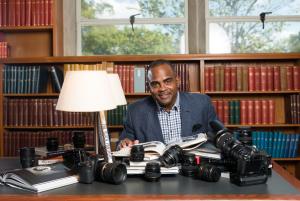
On Wednesday, October 7, 2020 we had our first gathering with Victor Wooten and the fifteen scholars who are privileged to be a part of this cohort. Victor asked us, “Why are you here?” Many answered while I listened. I didn’t speak during the formal two hour period, I listened. I hadn’t intended not to speak. Prior to the gathering formally beginning I was my normal raucous self but when Dr. Lynne Westfield called us to order my posture changed. If would’ve answered the question Victor posed I would’ve said: “I am here because I love music. I am here because I use music in all of my classes. I am here because I thank improvisation is the key to living full and adventurous life. I love the guitar. I love the bass. I am grew up listening to Larry Graham, Bootsy Collins, James Jamerson, Jaco Pastorious and so many more. I am a true fan of Stanley Clarke, Marcus Miler, Chritian McBride and Victor Wooten. Victor Wooten is not simply a musician but to me he is a mystic, a teacher, a scholar and brilliant. Whenever Victor Wooten is in town I am there to be a part of the experience.” Everytime Victor comes to Atlanta I am there (the links below are to photo galleries of two of my recent experiences at a Victor Wooten concert). Victor Wooten at the Variety Playhouse in Atlanta, GA https://flic.kr/s/aHskZV22bG https://flic.kr/s/aHskzJKr6A I was in this cohort for the experience. I wanted to experience what it meant to be with Victor and my colleagues to do this work together, to grow together and reimagine what teaching could be for us in the present age. [embedyt] https://www.youtube.com/watch?v=GONEnFyj73w[/embedyt]